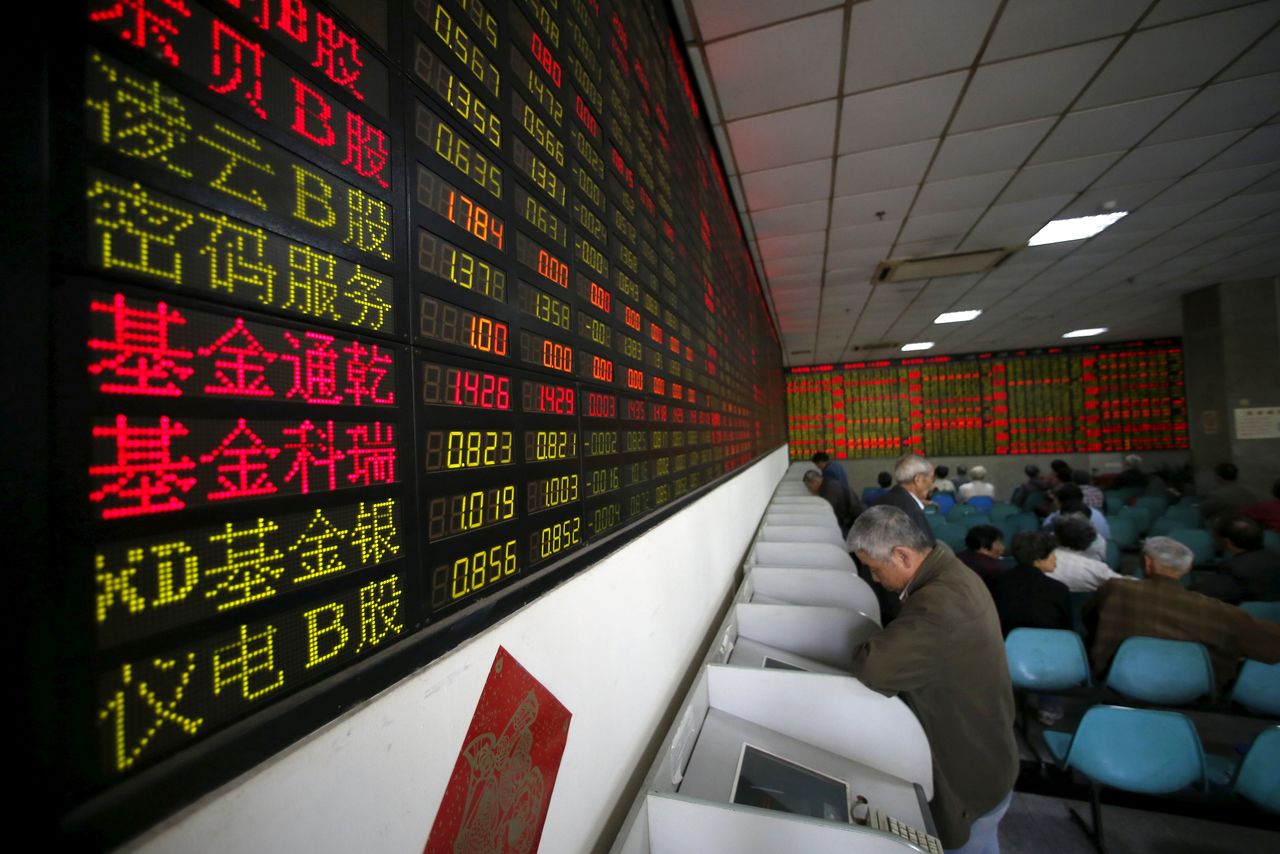Factbox: Chinese bonds' inclusion in major global indexes
Newsfrom Japan
- English
- 日本語
- 简体字
- 繁體字
- Français
- Español
- العربية
- Русский

FILE PHOTO: Investors look at computer screens showing stock information at a brokerage house in Shanghai, China, April 21, 2016. REUTERS/Aly Song
SHANGHAI (Reuters) - FTSE Russell's World Government Bond Index (WGBI) will become the last major global index to include Chinese government bonds (CGBs) from Friday, marking a milestone in foreign participation in the world's second-largest bond market.
Here is what you need to know about Chinese bonds' inclusion into three major bond indexes:
FTSE RUSSELL WORLD GOVERNMENT BOND INDEX (WGBI)
HSBC estimates China's weight in WGBI will be about 5.9%, which would drive $130 billion of index-related foreign inflows into CGBs over their 36-month inclusion period. Despite their inclusion in the index, Japan's Government Pension Investment Fund (GPIF) said in September it would not invest in Chinese government bonds due to what it said were settlement and liquidity issues.
FTSE Russell said in March that it had slowed down the inclusion period following feedback from market participants, which included Japanese investors' concerns around settlement and liquidity.
HSBC said the impact of GPIF's decision would be limited, resulting in estimated foregone inflows of $15 billion over the inclusion period, though other institutional investors in Japan might follow GPIF's move.
JPMORGAN GOVERNMENT BOND INDEX - EMERGING MARKETS
In February 2020, nine Chinese local currency bonds began a 10-month process of entering JP Morgan's Government Bond Index Emerging Markets (GBI-EM) suite, eventually giving China a 10% weighting in the flagship Global Diversified Index.
BLOOMBERG BARCLAYS GLOBAL AGGREGATE INDEX
Unlike the JPMorgan and FTSE Russell indexes, the Global Aggregate also includes Chinese policy bank bonds, which boast higher yields than government bonds and are among the most liquid instruments in China's interbank bond market.
China's cabinet on Wednesday removed lingering uncertainty over tax waivers on policy bank bonds for foreign investors that were set to expire in November. Tax exemptions on bond interest for foreign investors will be extended until the end of 2025, the State Council said in a meeting.
The Global Aggregate inclusion period took 20 months and ended in November 2020, taking China's weight in the index to around 6%.
FOREIGN PARTICIPATION
Index inclusion, CGBs' relatively high yields and their low correlations with other global assets have helped a steadily rising foreign interest. Foreign holdings of CGBs stood at 2.28 trillion yuan ($356.39 billion) at the end of September, a record - and more than double the level when Global Aggregate inclusion began in April 2019.
Chinese 10-year bonds currently yield around 2.96%, compared to an equivalent U.S. yield of 1.55% and a Japanese 10-year yield of 0.09%. In Europe, German Bunds have negative yields. However, Chinese property developer China Evergrande Group's debt crisis has raised concern about possible wider financial contagion. Those worries have pushed Chinese corporates' high-yield dollar bond spreads to record highs in recent weeks.
($1 = 6.3975 Chinese yuan)
(Reporting by Jason Xue and Andrew Galbraith; Editing by Vidya Ranganathan and Rashmi Aich)
(c) Copyright Thomson Reuters 2021. Click For Restrictions -
https://agency.reuters.com/en/copyright.html